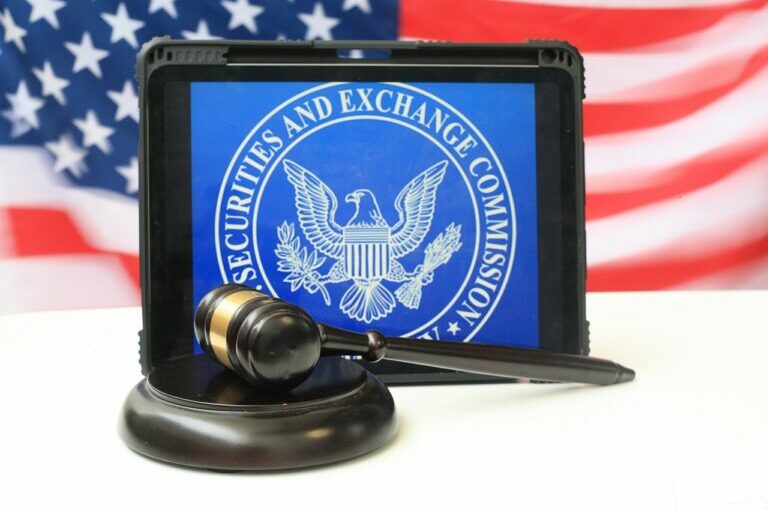On 13 July 2023, Honorable Analisa Torres, a district judge for the United States District Court for the Southern District of New York, delivered a nuanced ruling in the protracted legal feud between the U.S. Securities and Exchange Commission (SEC) and Ripple Labs Inc. The lawsuit, initiated in December 2020, accused Ripple and its senior executives, Bradley Garlinghouse and Christian A. Larsen, of unlawfully offering and selling securities. This was alleged to violate Section 5 of the Securities Act of 1933. The SEC further claimed that the executives were complicit in Ripple’s alleged violations.
Both parties had submitted their summary judgment motions for the court’s consideration. The court issued a mixed ruling, partially approving and partially rejecting the motions from both the SEC and Ripple and its executives. Specifically, the court approved the SEC’s motion for summary judgment on Institutional Sales but rejected it for other aspects. On the flip side, Ripple’s motion concerning Programmatic Sales, Other Distributions, and sales by Larsen and Garlinghouse was approved, except for the Institutional Sales portion. The SEC’s motion that accused Larsen and Garlinghouse of aiding and abetting was also denied.
Judge Torres provided specific insights into the XRP sales by Larsen and Garlinghouse. She stated that these sales were conducted through blind bid/ask transactions on various digital asset exchanges. Neither party was aware of the other’s identity, making it impossible to satisfy the third criterion of the Howey Test, which is used to determine if a transaction involves an investment contract. She also clarified that XRP, as a digital token, does not inherently meet the Howey Test requirements for being an investment contract.
Regarding secondary market sales of XRP, the judge noted that the SEC had not convincingly argued that these constituted investment contracts. She emphasized that the funds from these sales never traced back to Ripple, thereby preventing the court from making such a determination.
Following the ruling, several pivotal events occurred:
- A trial date for the SEC’s claims against Garlinghouse and Larsen was scheduled for April 2024.
- The SEC attempted to file a motion for interlocutory appeal, aiming to escalate the case to the United States Court of Appeals for the Second Circuit without awaiting the trial’s end.
- Judge Torres dismissed the SEC’s motion for interlocutory appeal.
- The SEC withdrew its aiding and abetting claims against Garlinghouse and Larsen, leading to the cancellation of the trial set for next year.
Yesterday, Jeremy Hogan, an American lawyer who has been closely following the lawsuit, shared a series of insights on X (formerly known as Twitter). According to Hogan, the practical implications of the case are largely settled, even though some legal proceedings may still be on the horizon. He emphasized that the time for public concern over the case has essentially come to an end, in his opinion.
Hogan pointed out that the SEC has withdrawn the remaining charges, eliminating the need for a trial next year. He stated that the facts of the case are now established and no new revelations are expected.
He also discussed the possibility of a settlement before a Final Judgment is issued. Hogan mentioned that both parties could file appeals, and noted that the SEC has already indicated its intention to do so.
Drawing on statistical data, Hogan estimated that the SEC has only a 14.2% chance of winning on appeal. He added that the detailed, fact-based nature of the judge’s opinion does not improve those odds for the SEC.
Hogan further elaborated that if the SEC does win the appeal in 2025, the Appellate court would have to remand the case back to the trial judge for additional judicial findings and determinations. This is due to the way the judge wrote her order.
Regarding “other distributions” of XRP, Hogan pointed out that the judge did not make findings on the second and third prongs of the Howey Test. He suggested that there’s a possibility the judge could rule in favor of Ripple on these matters.
He also mentioned that if the Appellate court agrees with the SEC, the issue would still need to go back to the trial court for further determinations. Hogan indicated that the judge seems to give some weight to Ripple’s Fair Notice Defense.
Hogan concluded by outlining the lengthy and complicated path the SEC would have to navigate to win on appeal. This includes not settling, winning the initial appeal, going through additional hearings, and then winning another appeal.
Finally, Hogan calculated the SEC’s overall chance of winning to be just 2.367%, likening it to the odds of the NFT team New York Jets winning the Super Bowl. He stated that the case is over for all practical purposes and is likely to end not with a bang, but with a whimper.
Featured Image via Pixabay
Source: Read Full Article
